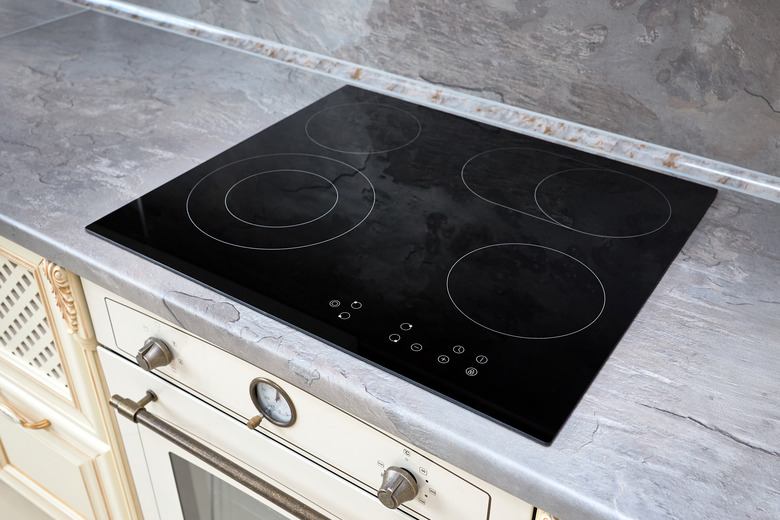What Causes Ceramic Glass Electric Cook Top To Crack?
A glass-ceramic electric cooktop doesn't cook as quickly as an induction cooktop, according to Home Stratosphere, and it isn't as widely-used as a gas cooktop, but it has positive features that appeal to homeowners who appreciate its sleek, smooth appearance. It does, however, have the unfortunate drawback of being vulnerable to breakage. The two most common reasons glass cooktops crack are impacts from heavy pots and excessive heat from one of the burners or a hot spot created by burnt-on food.
Use the Right Cookware
Use the Right Cookware
It's fairly obvious that dropping a heavy pot on a glass cooktop can crack the glass, and that's one reason that heavy cast-iron implements are not recommended, but there's also another reason. Pots and pans with irregular surfaces, such as cast iron, create micro-scratches when you drag them across the cooktop. A micro-scratch, like a score mark, can weaken the glass to the point of breaking. The usual method for cutting glass, after all, is to make a score line and break the glass along the line.
The best pots and pans for a glass ceramic cooktop are made of heavy-duty aluminum, stainless steel titanium or high-carbon steel, and they have flat, smooth bottoms. The ones most likely to cause damage are made of porcelain, stone, ceramic or cast iron. Unless they are approved for use on glass surfaces, you should also avoid enameled cookware, because the enamel can melt and stick to the hot glass.
Glass Stove Top Cracked While Cooking
Glass Stove Top Cracked While Cooking
It's important to keep your glass cooktop clean because food spatters can bake onto the surface. When that happens, they create hot spots that can cause cracking. The reason this happens is that the carbonized food acts as an insulator, preventing heat from escaping, forcing it back into the glass and creating stress that results in a crack. The damage can occur in the time it takes to boil a pot of water.
Cost to Replace Glass Top Stove
Cost to Replace Glass Top Stove
Overheating can occur for another reason that is, fortunately, less common. Each heating element on an electric stove is equipped with a temperature limiter that prevents the element from overheating. If this limiter fails, the element can get hot enough to crack the glass.
You can sometimes replace the limiter, but you may have to replace both the element and the limiter along with the stove top. The cost to replace a glass stove top is around $200. Since a new stove can cost over $1,000, it's worth doing.
Do Not Use Abrasive Cleaners
Do Not Use Abrasive Cleaners
Just as small particles underneath cookware can cause scratches that can result in cracks, so can the particles in granular cleaners. You should never use scouring powder or anything similarly abrasive to clean your stove top. Even if the abrasive cleaner doesn't ultimately result in a cracked stove top, the fine scratches can cloud the surface and require you to resurface the glass top stove.
The cleaning method recommended by Merry Maids is to spritz on distilled white vinegar from a spray bottle and wipe it off with a microfiber cloth. When you need a heavier-duty cleaner, sprinkle baking soda over the vinegar, cover the stove top with a damp towel and let it sit for 10 minutes before wiping. Clean off burnt-on food spills by scraping them with a razor blade to prevent hot spots that cause cracking.
